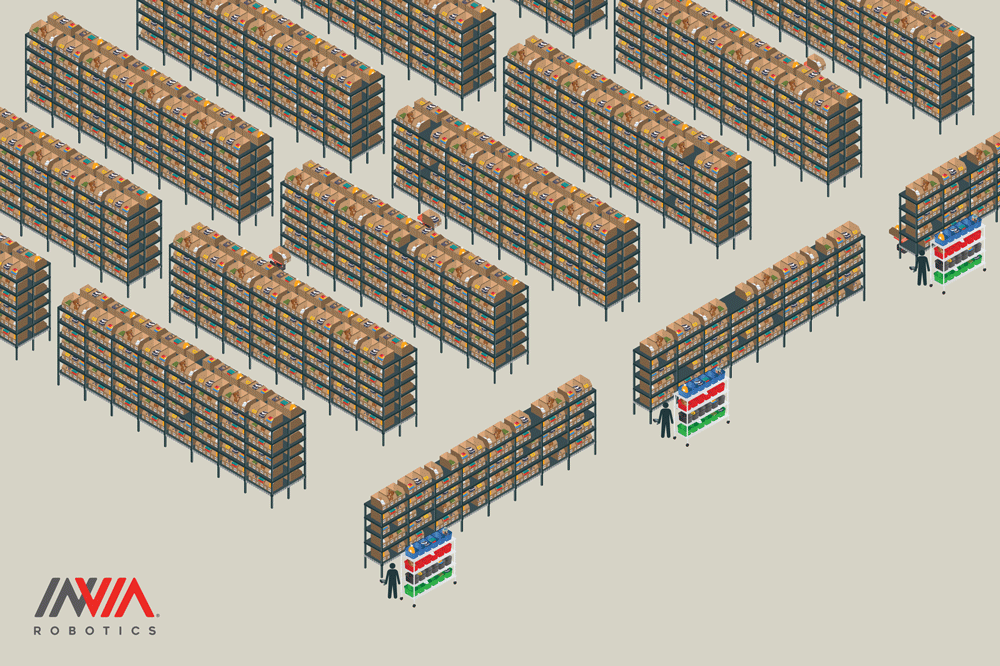
When you think of the staggering volume of orders that Amazon processes every day, it’s no wonder that the company has been investing in robotics and automation in its fulfillment centers. But what if you are an e-commerce operation that handles a lighter volume? Would your business benefit from the same type of technology being used by the online retail giant?
The answer is yes — with a robotic system that’s customized to fit your size and level of throughput.
The Advantages of Robots
Adding automation to your warehouse does not have to be an expensive or time-consuming exercise. One of the most important things we do at inVia Robotics is to perform an assessment of your current warehouse environment, including workflows and operational data, and create the right automation design for your business. That enables us to determine the appropriate number of picking robots to deploy.
One solution we have developed for warehouses that process a lighter volume of orders is to use relatively few robots, but allow them to run for long periods of time. Here’s how it works:
- Customers’ orders come in 24/7, but the warehouse staff works during the day.
- Picking robots go to work in the off hours, gathering totes filled with items and placing them on a shelving unit similar to a put wall.
- Workers arrive to find all the items they need to fulfill the day’s orders are waiting for them on shelves
- Workers quickly pick the items needed to assemble the orders, and the robots return the totes to their proper place in the warehouse.

This solution is modeled after one of the most important developments in the modern computing era: the CPU cache. A cache is a memory block that sits close to the core of the central processing unit (CPU) and stores copies of the most frequently-accessed data from the main memory, which takes longer to access. Moving that data closer to the CPU saves time and energy — just like using robots to move items closer to the people who pack the orders saves time and energy.
Why Does it Matter?
It might be tempting to think that the more robots you add to the mix, the more efficient your warehouse will be, but that’s not always the case: If you had 100 fulfillment robots retrieving items for a few thousand orders, they’d spend most of the day sitting idle in queue, waiting for workers to catch up. By using a “caching” strategy, a handful of robots can run for extended periods of time, prepping the day’s orders at night or in the early morning hours. And you don’t pay for robots, you pay for productivity. Sometimes less is more.